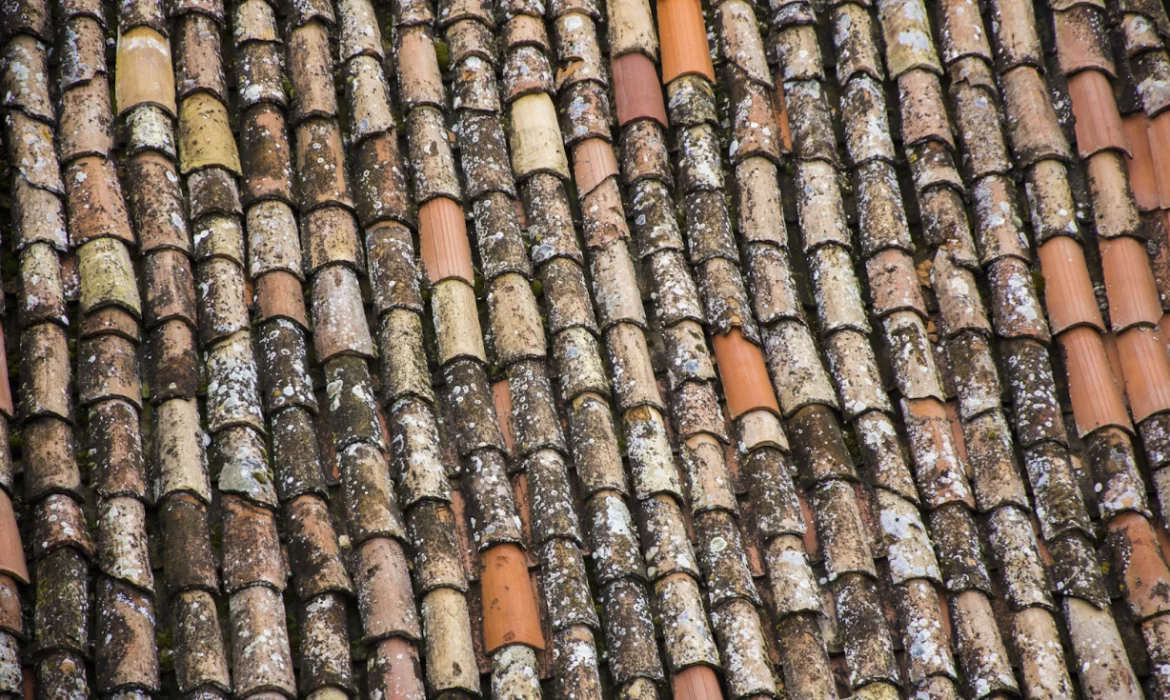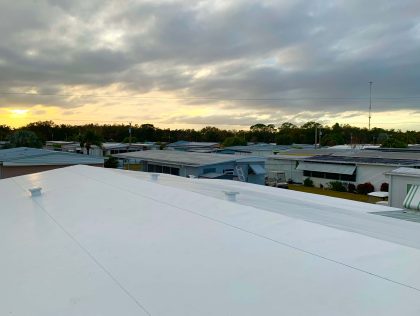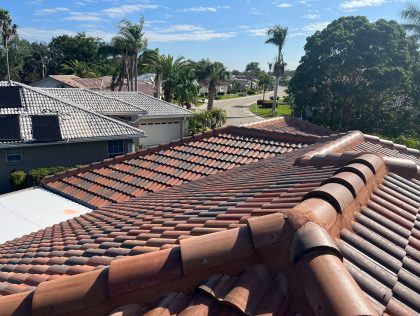Keeping an eye out for early signs of roof damage is crucial to maintaining the safety and integrity of your home. For example, did you know that water stains on the ceiling and on the plywood in your attic (if you have one) are all indicators that your roof may need attention?
Your roof is like a shield for your home, protecting it from rain, wind, and sun. But over time, it can take a beating, and signs like the ones we will discuss in this article may start to show. It’s important to catch these signs early to prevent bigger problems.
In this article, we’ll discuss five early signs of roof damage that you shouldn’t ignore and what to do about them!
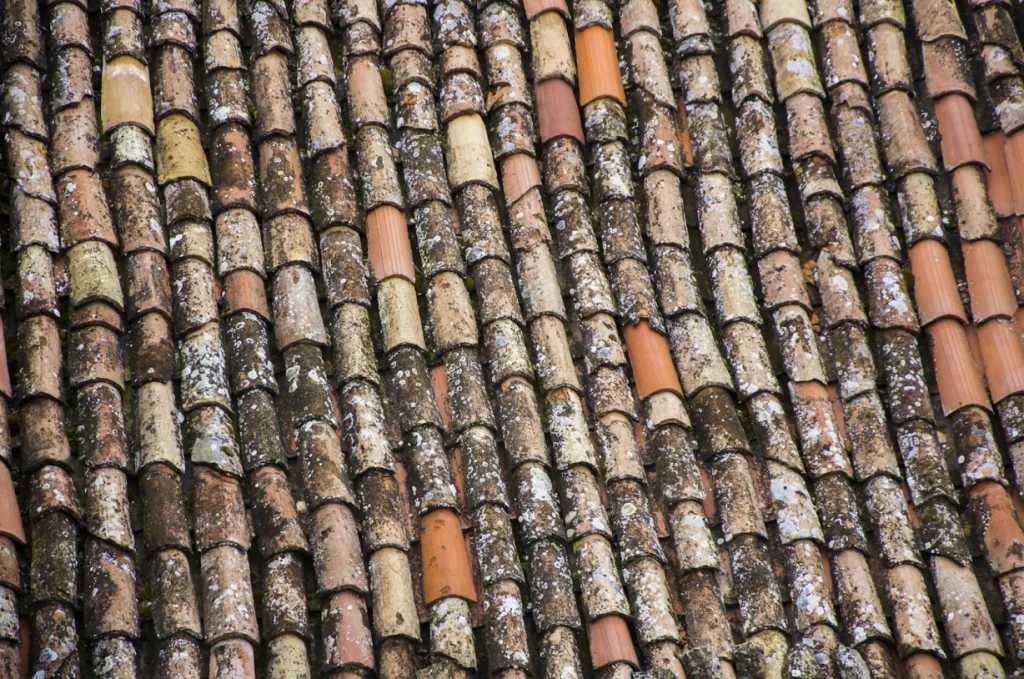
Photo by: Blaz Erzetic https://unsplash.com/photos/brown-roof-FEtIUv_x9r8
1. Water Stains on Ceiling
One of the main things that come into play when you think about regular home inspection, is water stains. Water stains on your ceiling are the red flags of roof damage. When you notice brown or yellowish spots on your ceiling, it clearly signifies that water is sneaking into your home one way or another. This could be due to a leaky roof. Water stains can start small, but they’ll grow if you don’t take action. Don’t ignore these stains; they indicate that your roof needs attention.
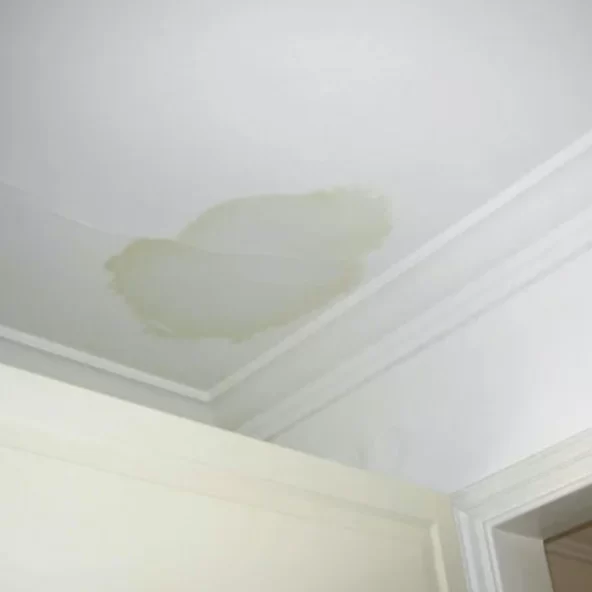
What to do when you see water stains:
It’s important to have a professional inspect your roof promptly. However, in the meantime, you could take some action to refresh your ceiling’s look and prevent any additional damage. To do that, follow these steps:
- Contact Your Local State Licensed Roofer:
The most crucial step is to contact your local state-licensed roofer to assess the situation and determine the cause of the stains. They will create a plan to fix the issue permanently, whether it’s related to roof damage, plumbing leaks, ice dams, or clogged gutters. Only proceed to the next steps after obtaining their approval. - Clean the Stain
Once your roofing expert has developed a plan to address the root issue and given their approval, you can proceed to clean the stain. This helps prevent mold growth. Create a cleaning solution by mixing one part bleach with three parts warm water, or use a premixed cleaner. Gently wipe the stain and rinse the area with a wet rag. Allow it to dry completely. - Apply Ceiling Primer
Utilize a specialized ceiling primer, such as an oil-based ProBlock alkyd primer or a water-based Quick Dry Stain Blocking acrylic primer. This step is crucial to ensure the stain won’t bleed through the paint. - Apply Paint
After the primer has dried, apply latex ceiling paint to cover the water stains. Painting the entire ceiling ensures a consistent colour, avoiding uneven spots.
2. Stains on Exterior Soffit
The soffit is the underside of your roof’s overhang. If you see stains or dark spots on it, it’s another sign of potential roof damage. Stains on the soffit often mean there’s a leak or a problem with your roof’s drainage. These stains might not look like a big deal, but they can lead to more significant issues if addressed.
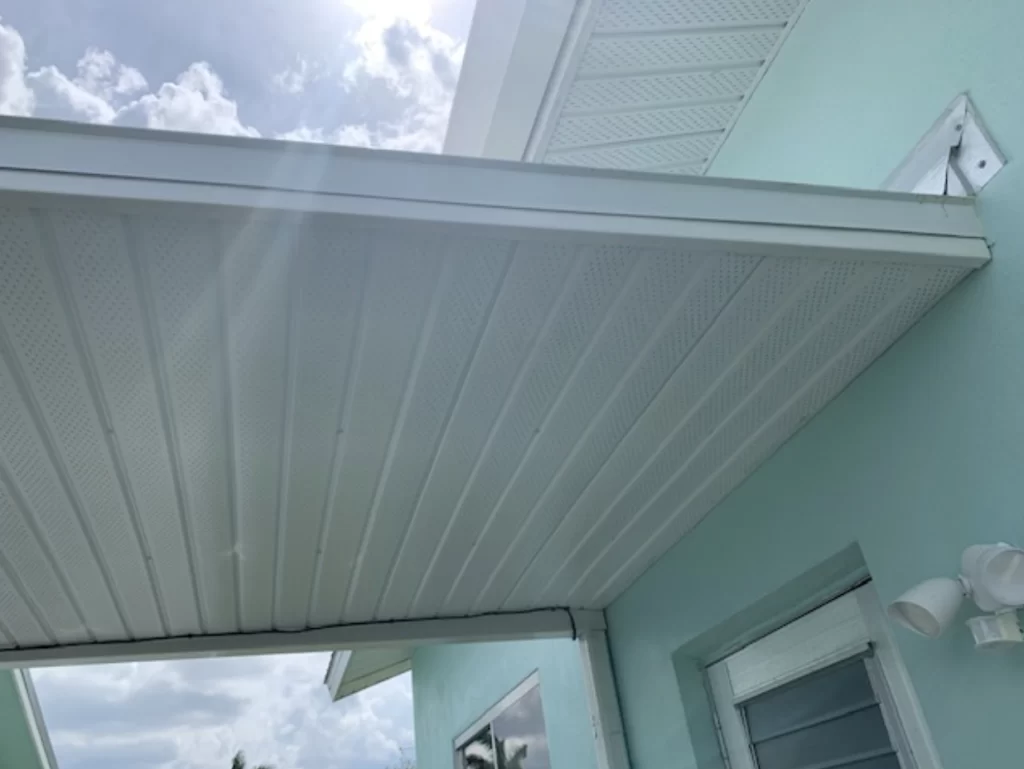
Cleaning Soffits and Fascias
Before proceeding with cleaning soffits and fascias, it’s essential to follow a similar principle to what we discussed earlier: first, contact a professional to assess the stains or issues on your soffits and fascias. Once you have their approval and guidance, you can proceed with the cleaning process. Here are the steps
With a Pressure Washer:
- Step 1:
Rinse the soffits and fascias with clean water to remove debris and dirt. Use a low-pressure nozzle to avoid pushing debris into vents. - Step 2:
Apply detergent by filling the tank and diluting it if needed. Switch to high pressure and spray in the same direction you applied detergent. Rinse with low pressure when done.
Without a Pressure Washer:
- Step 1:
Mix ½ cup of detergent and two tablespoons of bleach with warm water in a bucket. - Step 2:
Use a ladder to reach soffits and fascias, scrubbing with a sponge. Rinse using a high-pressure garden hose nozzle. - Step 3:
Move the ladder to clean all areas within reach.
Removing Mould from Soffits and Fascias:
- Step 1: Mix three bleach to one warm water per gallon in a bucket.
- Step 2: Scrub mould-affected areas with a stiff brush.
- Step 3: Move the ladder to clean all mould-affected areas.
- Step 4: Allow soffits and fascias to dry.
- Step 5: Inspect after a week and repeat if necessary until all mould is removed.
3. Shingles in Your Yard
Your roof is covered with shingles, protecting your home from the elements. If you start finding shingles in your yard, it’s a definite sign of roof damage. Shingles may be blown off during a storm, or they could be getting old and falling apart. Either way, missing shingles can expose your roof to more damage, so it’s crucial to replace them.
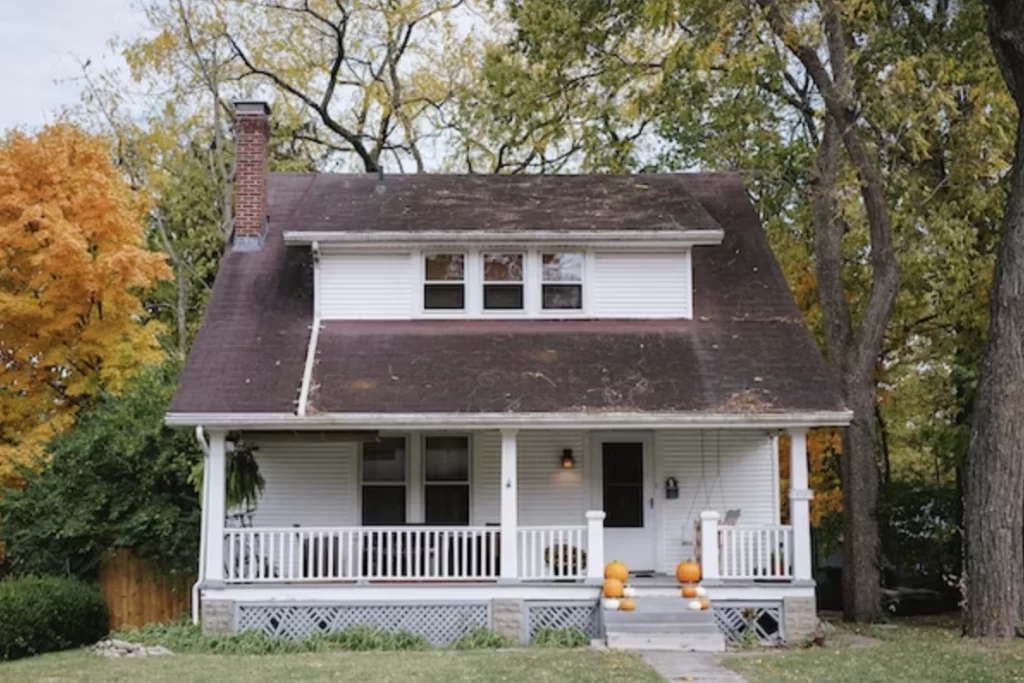
Dealing with Shingles in Your Yard
When you discover shingles in your yard, it’s a sign of potential roof damage that requires immediate attention. Instead of attempting any DIY actions, it is crucial to engage a professional roofing company. Especially in Florida’s climate, DIY reinstallation of shingles is not advisable.
Reach out to a professional roofing contractor to assess the situation accurately. They have the expertise to identify the extent of the damage and implement the necessary repairs, ensuring the long-term integrity of your roof.
Furthermore, consider scheduling regular inspections by professionals to prevent future shingle loss and maintain your roof’s durability in the face of Florida’s challenging weather conditions
4. Missing Shingles on Your Roof
In addition to shingles in your yard, check your roof for missing shingles. If you spot bare spots where shingles should be, that’s a problem. Missing shingles can leave your roof vulnerable to leaks and other damage. You should pay attention to it to keep your home safe and dry.
Solution for Missing Shingles on Your Roof
If the extent of roof damage is significant or if you’re not confident in your ability to handle roof repairs, it is highly recommended to consult a professional roofing contractor. Their expertise and experience are invaluable in addressing complex roofing issues effectively. By engaging a licensed roofing professional, you ensure that the root cause of the water stains is accurately identified and comprehensively resolved, providing your home with lasting protection against further damage and potential future problems. Their specialized knowledge and access to the right tools and materials will grant you peace of mind and long-lasting structural integrity for your home.
5. Water Stains on Your Plywood (Only for Attic Owners)
If you have an attic, you can also check for water stains on your plywood. Go into the attic and look for any dark or discolored spots on the plywood underneath the roof. This is a more internal sign of a leak, and it’s essential to catch it early. Ignoring water stains on your attic’s plywood can lead to more extensive damage and expensive repairs.
Solution for Water Stains on Your Plywood
When you come across water stains on the plywood beneath your roof, it is crucial to deal with this matter promptly by reaching out to a professional. Since the plywood serves as the primary layer of your roof, there’s no alternative but to connect directly with a professional to address this issue effectively and prevent further deterioration.
Conclusion
Regular roof inspections can help you catch these problems before they become more significant and expensive. It’s a good idea to schedule a professional roof inspection at least once a year, especially if you live in an area with extreme weather conditions.
The solutions you have read above are the immediate solutions; however, on the other hand, these are temporary. You have hired a roofer inspection contractor. A certified roofer can identify and address issues before they lead to more extensive roof damage. If you need clarification about your roof’s condition or have noticed any of the signs mentioned in this article, feel free to contact a roofing professional for a thorough inspection.
Ignoring these early signs of roof damage can result in more extensive and costly repairs. So, don’t wait until a small problem becomes a big headache. Take action when you notice any of these signs, and remember the importance of regular roof inspections to keep your home safe and dry.
If you want to learn more about the benefits of regular roof damage inspections, check out our blog. Your home deserves the best care, and a healthy roof is a big part of that.

